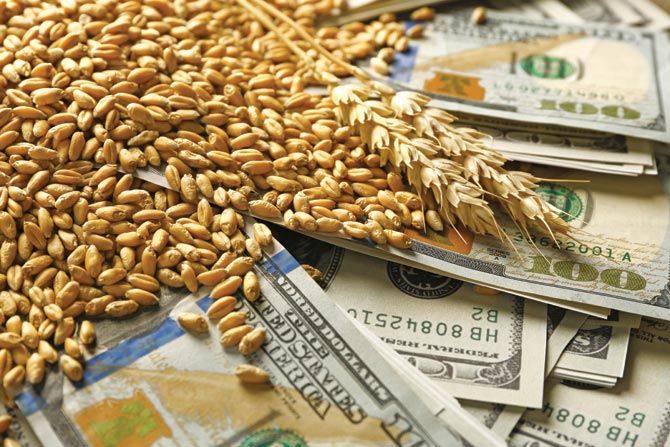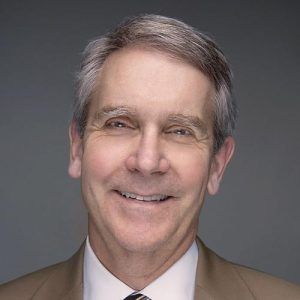The farming community enjoys a reputation for hard work, honesty and integrity. But as with any community, there are exceptions, and the category of “Farmers Engaged in Fraud” is one of those.
Each of these stories took place in the last two decades. In most instances, the perpetrator had been a long-standing and respected member of his community. The fraud was uncovered only after it had persisted for years. In each case, the trail of victims hurt by the fraud was long. The perpetrators went to prison for their crimes. Understanding these cases can teach us how to spot or defeat fraud.
Organic Grain Fraud – Missouri Farmer Passes off Ordinary Crops as “Organic”
Randy Constant, a Missouri farmer, was considered the “mastermind” of this operation, but it involved at least five other farmers – including three from Nebraska – each of whom was sentenced to prison. The total damage caused by this group topped $140 million. (Per the press release, “Field of Schemes Fraud Results in Federal Prison for Leader of Largest Ever Fraud in U.S. History,” U.S. Attorney’s Office for the Northern District of Iowa [Aug. 19, 2019].)
The concept was simple enough: certify and sell grain and other farm products as “organic” but raise them as you would any other crop – with chemicals, pesticides and inputs that are not permitted in organic certification.
Because farm products certified as organic can bring better prices, greater profits provided the motive. And it can be difficult to determine if a particular product was grown organically, so detection of this scheme was difficult. Although Constant started with a modest “organic” operation, the scheme was so profitable that he enlarged it and recruited more farmers. Eventually, it encompassed some 3,000 acres and involved several farmers.
One key to Constant’s success in fooling buyers about his crops was the use of an outside organization to certify that his products were organically grown, even though most were not. He found an outside company that did not employ a very robust certification process. As a result, Constant was able to obtain certification of the farm products as “organically grown” without much difficulty.
He was eventually caught and prosecuted. He pled guilty to selling more than $140 million in grain he falsely represented was organic. According to evidence at sentencing, constant’s scheme also affected the organic meat market. His grain was mostly used as animal feed, primarily for chickens and cattle. That livestock was then sold as organic meat or products. Constant’s fraud caused thousands of consumers across the country to pay premium prices for what they thought were organically raised meats.
A federal court sentenced him in 2019 to 10 years in prison. At least five other farmers, who knowingly participated in passing off inorganic crops as organic, were likewise convicted. Constant took his own life in 2019 before serving his sentence.
In a remarkably similar scheme, a South Dakota organic grain broker succeeded in passing off grain as organic over six years, from 2012 to 2018. Kent Anderson bought conventionally grown grain and fraudulently sold it as organic at a substantial profit. According to federal court documents, he allegedly amassed about $71 million in proceeds. He pled guilty in 2020 and was sentenced to 51 months in prison.
Crop Insurance Fraud – A Network of Crooked Farmers, Agents, Adjusters and Inspectors
Robert Carl Stokes, a crop insurance agent in North Carolina, devised a complicated crop insurance fraud scheme that resulted in at least $100 million in false crop insurance claims and payments from 2003 through 2008. Stokes’ scheme involved farmers, other insurance agents, warehouse workers, and insurance adjusters. Directly linked with Stokes was his business partner, Mark Pridgen, who served as a middleman and sold crop insurance directly to farmers (although he had no license). (Per Parker, “The Great Organic Food Fraud,” New Yorker Magazine, Nov. 8, 2021.)
As one writer explained, “Stokes demolished the standard checks and balances of crop insurance by greasing palms at all levels of the system.” (Per Bennett, “Evil Grain: The Wild Tale of History’s Biggest Crop Insurance Scam” AgWeb Farm Journal, Sep. 14, 2020.)
The general framework for the scam involved assisting a farmer in insuring his tobacco crop and reporting that the crop was damaged or the yield was less than expected due to an insured event, even though the crop was healthy and abundant. For every pound of tobacco reported as lost, the farmer would get a payment. Stokes would split the insurance benefit with the farmer. Then, the farmer would hide the portion of the crop that exceeded the reported yield from the inspectors and later sell it on the black market in someone else’s name, pocketing still more money. Stokes also ensured that tax authorities could not detect illicit income. He started a check-cashing business that worked around currency transaction reports so the funds could remain hidden. This scheme netted Stokes and his co-conspirators more than $100 million over five years.
Stokes was finally caught when a business associate turned him in and assisted investigators by going undercover in the fraud operation. One of the prosecutors, Josh Howard, talked about the case afterward: “Crop insurance fraud never surprises me,” Howard said, “but this case was bigger than anything I’d ever handled or even heard of. There were just so many people involved at so many levels, and the warehouses were involved neck-deep.”(Bennett, “Evil Grain,” supra.)
Stokes pled guilty to various counts of fraud and money laundering in 2009. He was sentenced to 30 months in prison, followed by 16 months of house arrest, and ordered to pay $16 million in restitution. After serving his sentence, he died in 2016 at age 64. Forty other participants pleaded guilty or reached plea agreements.
Cattle Fraud – George Young and His Cattle Ponzi Scheme
One of America’s largest cattle fraud schemes was carried out by Missouri cattleman George L. Young from Grant City, Mo., and Kathleen McConnell of Kansas City, Mo. They offered to purchase and sell cattle for their clients and to provide care and feeding, promising high profits. Although they did purchase thousands of head of cattle, early on, they began using investor funds to pay off prior investors, thus implementing a “Ponzi Scheme.” They also borrowed from several different banks, effectively pledging the same cattle several times.
When the fraud was uncovered by one of the lenders in 2001, the books showed that Young and McConnell were caring for 344,000 head, but they had only about 17,000 head on hand. The rest were fictitious. The losses inflicted on cattle customers and banks were estimated at $160 million. Young and McConnell pleaded guilty to five criminal counts, including mail fraud and wire fraud, and were sentenced to prison in 2004.
Having some 17,000 head of cattle on hand made it difficult for banks and cattle owners to detect the fraud. When a banker or cattle owner conducts an inspection and sees thousands of cattle in pens and pastures, they find it difficult to determine a shortage. No one lender or cattle customer knew of the entirety of the Young operation, nor did they know how many cattle one lender might claim as its collateral. As a result, the fraud went undetected for years.
Another large cattle fraud was found in the State of Washington. There, Cody Easterday defrauded Tyson Fresh Meats out of $240 million in a scheme to overcharge it for raising cattle. Easterday admitted to charging Tyson for feeding cattle that didn’t exist. Easterday, who allegedly had a gambling addiction, used the fraud to recoup his gambling losses and feed that expensive habit. He pleaded guilty to fraud in March of 2021 and was sentenced to 11 years in prison. He agreed to pay restitution of $244 million, mostly to Tyson.
Conclusion: What We Can Learn From These Cases; Trust, but Verify
Lenders are taught to inspect and verify collateral, ask questions, insist on seeing financial information and hold the borrower accountable for promises and pay downs. Continuing these practices can help identify or curtail fraud.
Watch for Warning Signs
There’s no surefire way to identify a borrower engaged in fraud. As these cases teach us, often, the fraudster enjoys a good community reputation and simply appears to be operating profitably. But a few clues might have helped the vigilant lender.
1. Extravagant lifestyle or sudden change in spending habits
If a borrower is evincing an especially grand lifestyle, it doesn’t mean he or she is committing fraud, but it might be a warning sign. Someone in the midst of a wildly profitable fraud scheme has a hard time refraining from spending the money. It might be used for frequent trips, a new vacation home, a luxury car or other high-end items. Watch for a sudden change in spending habits.
2. Unwillingness to reveal details about their operations
People engaged in an ongoing fraud scheme worry about getting caught. They may seek to minimize the financial information they provide to lenders. For example, a farmer who reports that he farms thousands of acres of leased land but actually farms far less may refuse to identify all landlords from whom he leases. A cattle feeder who overstates the number of cattle on hand may put off inspections. He or she may also under-report income on tax returns. Seek details of your borrowers’ operations, and watch for unreasonable or stubborn refusals to provide details.
3. Promising investors or customers very high returns
If your customer runs an operation in which he has partners or investors and your customer is promising to deliver high returns, something else may be going on. Very few ag-based businesses operating within the law can generate reliably high returns year after year.
4. Erratic behavior
Deceiving the community, friends, family, bankers and colleagues about your operations takes a toll on mental health. Erratic and surprising behaviors by the person engaged in fraud may provide a clue. Alcohol or drug abuse, gambling, marital problems, and even incidents of violence may be unrelated to a fraud scheme, but they might also be signs of a bigger problem.
T. Randall (Randy) Wright concentrates his practice on creditors’ rights, bankruptcy and commercial litigation. He represents lenders, other creditors, purchasers of assets out of bankruptcy, trustees and other stakeholders. He also represents select debtors in bankruptcy. He has courtroom experience in state, federal and bankruptcy courts throughout the Midwest.










